Kelly Wrighton, Colorado State University
For Kelly Wrighton of Colorado State University, collaborating with the JGI means having another partner at the table. [Read More]
 For Kelly Wrighton of Colorado State University, collaborating with the JGI means having another partner at the table. [Read More]
For Kelly Wrighton of Colorado State University, collaborating with the JGI means having another partner at the table. [Read More] How long have you collaborated with the JGI? We have been collaborating with JGI since 2015. We are supported by the JGI DNA Synthesis program. The DNA Synthesis team at JGI provides us with synthetic genes, which we then test in our laboratory for their function. Our project aims at characterizing a new class of… [Read More]
How long have you collaborated with the JGI? We have been collaborating with JGI since 2015. We are supported by the JGI DNA Synthesis program. The DNA Synthesis team at JGI provides us with synthetic genes, which we then test in our laboratory for their function. Our project aims at characterizing a new class of… [Read More]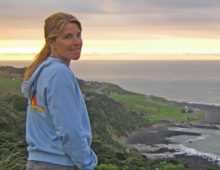 How long have you collaborated with JGI? I started collaborating with JGI in the Fall of 2013 as part of a Facilities Integrating Collaborations for User Science (FICUS) award between JGI and the Environmental Molecular Sciences Laboratory (EMSL). (Click here to learn more about her approved FICUS proposal.) We have been working with the JGI… [Read More]
How long have you collaborated with JGI? I started collaborating with JGI in the Fall of 2013 as part of a Facilities Integrating Collaborations for User Science (FICUS) award between JGI and the Environmental Molecular Sciences Laboratory (EMSL). (Click here to learn more about her approved FICUS proposal.) We have been working with the JGI… [Read More] “JGI has phenomenal scientists and staff who are part of our dream team.” How long have you collaborated with the JGI? I have been involved with the JGI Community Science Program (CSP) since 2012. I am involved in two JGI projects. The first one is the Brassicales Map Alignment Project (BMAP), which was funded… [Read More]
“JGI has phenomenal scientists and staff who are part of our dream team.” How long have you collaborated with the JGI? I have been involved with the JGI Community Science Program (CSP) since 2012. I am involved in two JGI projects. The first one is the Brassicales Map Alignment Project (BMAP), which was funded… [Read More]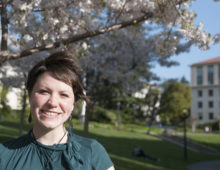 “If we can assemble genomes, we can learn some of these strategies to reduce bias.” I study the role of secondary metabolites, especially defensive chemistry and how they influence plant-fungal interactions. For my Ph.D., I’m studying a mushroom called Amanita phalloides, the death cap mushroom. It’s native to Europe but it was brought overseas… [Read More]
“If we can assemble genomes, we can learn some of these strategies to reduce bias.” I study the role of secondary metabolites, especially defensive chemistry and how they influence plant-fungal interactions. For my Ph.D., I’m studying a mushroom called Amanita phalloides, the death cap mushroom. It’s native to Europe but it was brought overseas… [Read More] How long have you collaborated with the JGI? I’m just starting my first partnership with JGI soon, but I’ve been working as part of larger JGI collaborations for about 15 years. I also worked with Jim Tiedje and Janet Jansson on the Great Prairie Grand Challenge soil sequencing project, which started about 10 years ago… [Read More]
How long have you collaborated with the JGI? I’m just starting my first partnership with JGI soon, but I’ve been working as part of larger JGI collaborations for about 15 years. I also worked with Jim Tiedje and Janet Jansson on the Great Prairie Grand Challenge soil sequencing project, which started about 10 years ago… [Read More]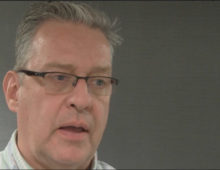 How long have you collaborated with the JGI? It’s probably been about ten years. We’ve been doing these high molecular weight DNA for a few projects and now through the ETOP program, we’re providing high molecular weight substrates for whole genome sequencing and for genotyping of various JGI Flagship Plant Genomes, and in support of… [Read More]
How long have you collaborated with the JGI? It’s probably been about ten years. We’ve been doing these high molecular weight DNA for a few projects and now through the ETOP program, we’re providing high molecular weight substrates for whole genome sequencing and for genotyping of various JGI Flagship Plant Genomes, and in support of… [Read More] How long have you collaborated with the JGI and on which projects? I’ve been working with the JGI for about ten years now. To date, all of our work has focused on some aspect of life in terrestrial geothermal springs, mostly Great Boiling Spring in northeast Nevada. These projects have included work on both microbial… [Read More]
How long have you collaborated with the JGI and on which projects? I’ve been working with the JGI for about ten years now. To date, all of our work has focused on some aspect of life in terrestrial geothermal springs, mostly Great Boiling Spring in northeast Nevada. These projects have included work on both microbial… [Read More]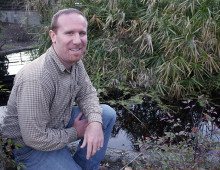 Departments of Microbiology, and Civil, Environmental and Geodetic Engineering, The Ohio State University, Columbus, OH Collaborated with JGI since 2001 How long have you collaborated with the JGI and on which projects? Since 2009 as head of my own lab, and since 2001 as a PhD student (with Penny Chisholm at MIT) working on the initial marine Prochlorococcus and… [Read More]
Departments of Microbiology, and Civil, Environmental and Geodetic Engineering, The Ohio State University, Columbus, OH Collaborated with JGI since 2001 How long have you collaborated with the JGI and on which projects? Since 2009 as head of my own lab, and since 2001 as a PhD student (with Penny Chisholm at MIT) working on the initial marine Prochlorococcus and… [Read More]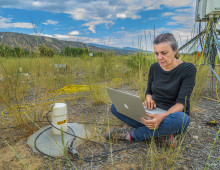 Jillian Banfield, PhD is a prominent geomicrobiologist and biochemist, a UC Berkeley Professor, a Berkeley Lab Earth Sciences Division staff scientist, and a long time user of the DOE Joint Genome Institute’s resources through the Community Science Program (CSP) and the Emerging Technologies Opportunities Program (ETOP). In this short interview, Jill shares her perspective how… [Read More]
Jillian Banfield, PhD is a prominent geomicrobiologist and biochemist, a UC Berkeley Professor, a Berkeley Lab Earth Sciences Division staff scientist, and a long time user of the DOE Joint Genome Institute’s resources through the Community Science Program (CSP) and the Emerging Technologies Opportunities Program (ETOP). In this short interview, Jill shares her perspective how… [Read More]